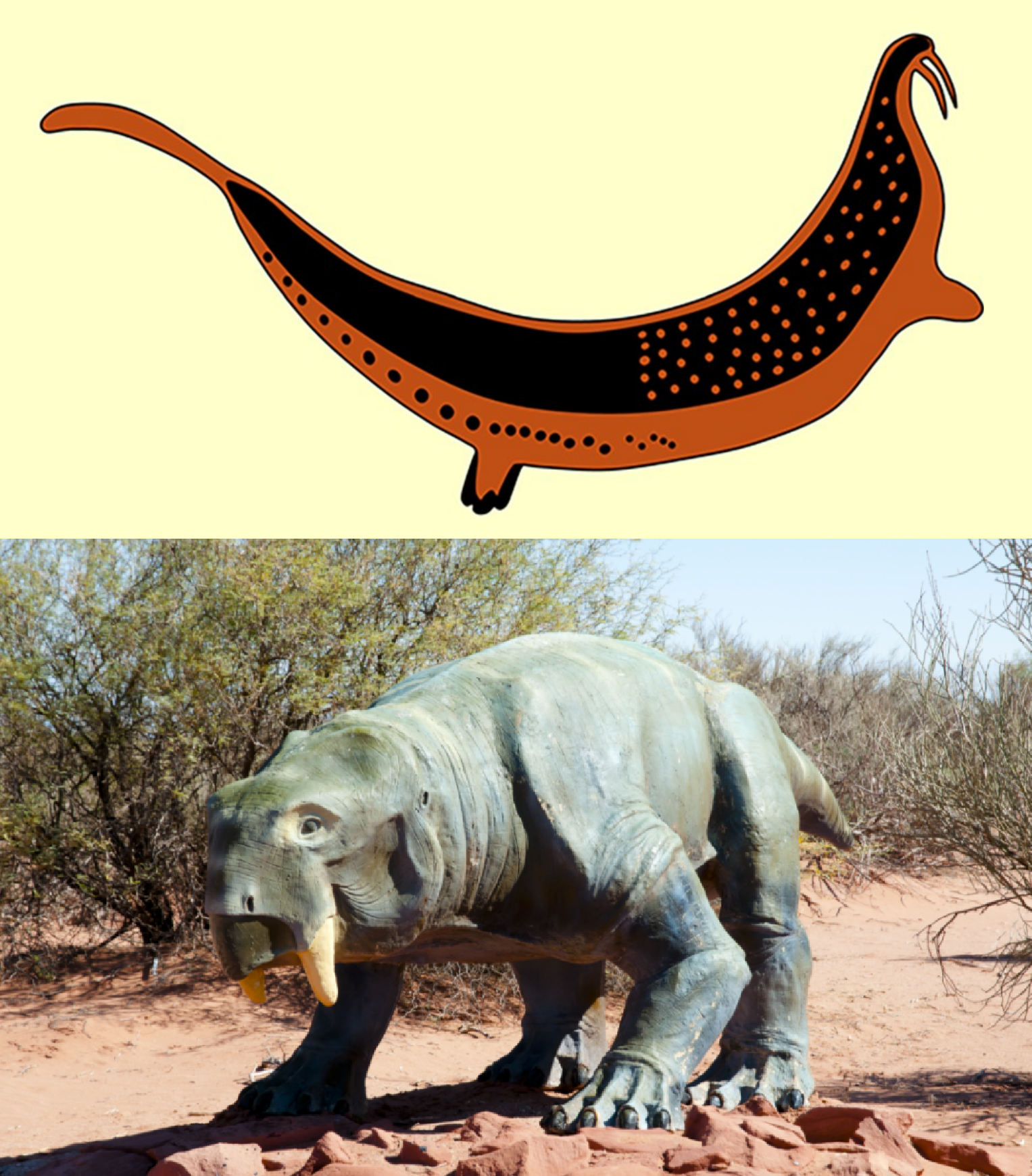In the Karoo Basin of South Africa, an unusual tusked beast is painted on a rock wall. Archaeologists have previously pondered whether the artwork depicts a mythical creature from the realm of fantasy, but new research makes the bold claim it was inspired by a dicynodont, an extinct species that lived long before humans.
If true, it indicates the Indigenous peoples of southern Africa were familiar with the prehistoric animal before it was scientifically described.
The painting was created by the San people of southern Africa between 1821 and 1835. Called “the Horned Serpent panel,” the illustration shows a long-bodied animal with downward-turned tusks that doesn’t match any animal living in the region today.
It might look like a walrus at first glance, but these marine mammals live near the North Pole on the other side of the world. Alternatively, you might suggest it’s just a being from the “spirit world” of the San – but these figures are almost always inspired by physical reality.
In a new study, Julien Benoit from the Evolutionary Studies Institute at the University of the Witwatersrand makes the case that the tusked figure is inspired by the fossil of dicynodont, a chunky-bodied herbivore with downward tusks that lived in this part of the world until ~200 million years ago.
Many cultures explored the world of fossils before Western scientists did.
Julien Benoit
There’s decent evidence of the San people identifying prehistoric fossils and transporting them across vast distances. It wouldn’t be a stretch to imagine that a fossil discovery ignited someone’s imagination and inspired their artwork. Indeed, it is argued extinct animals often make their way into the culture of the San.
Benoit also explains the San people have several myths of large, long-gone animals roaming the region. The study cites an account from 1905 that explains how the San sometimes talk about their ancestors coming into contact with “great monstrous brutes, exceeding the elephant or hippopotamus in bulk.”
Dicynodonts lived long, long before any humans were around, but this insight shows the San people were sharply aware of extinct animals and a different time before their own.

An illustration of the rock art in the new study (top) and a replica model of a dicynodont-like animal (bottom).
By digging into the mythology of the San people, Benoit notes the tusked lifeform fits into the trope of the “rain-animal.”
“Of course at this point it is speculative, but the tusked animal on the Horned Serpent panel was likely painted as a rain-animal, which means it was probably involved [in] rain-making ceremonies,” Benoit told IFLScience.
“During rain-making ceremonies, the San enter a state of trance and enter the realm of the dead to catch rain-animals and bring the rain back to the world of the living. By picking a species such as a dicynodont, that they knew was extinct and thus dead, they likely hoped this rain-animal had some increased potency to bridge the two worlds,” he added.
It’s noteworthy that the Horned Serpent panel dates to 1835 at the latest, but dicynodont was not scientifically described until the 1840s.
Speaking to IFLScience, Benoit said that the work of historian Adrienne Mayor has shown how “many cultures explored the world of fossils before Western scientists did.”
“The Native Americans knew about fossils before colonization and interpreted them in various ways, some implying they knew they belonged to long-gone animals. The San, in southern Africa, also collected fossils, as exemplified by the Bolahla rock shelter, in which they carried a dinosaur phalanx – which may be, by the way, the first time a dinosaur bone was ever discovered,” Benoit noted.
As is often the case in the fields of astronomy and biology, it looks like the depth of Indigenous knowledge has been massively underestimated.
The study is published in the journal PLOS ONE.
Source Link: African Rock Art May Show Extinct Animal That Lived Millions Of Years Before Humans